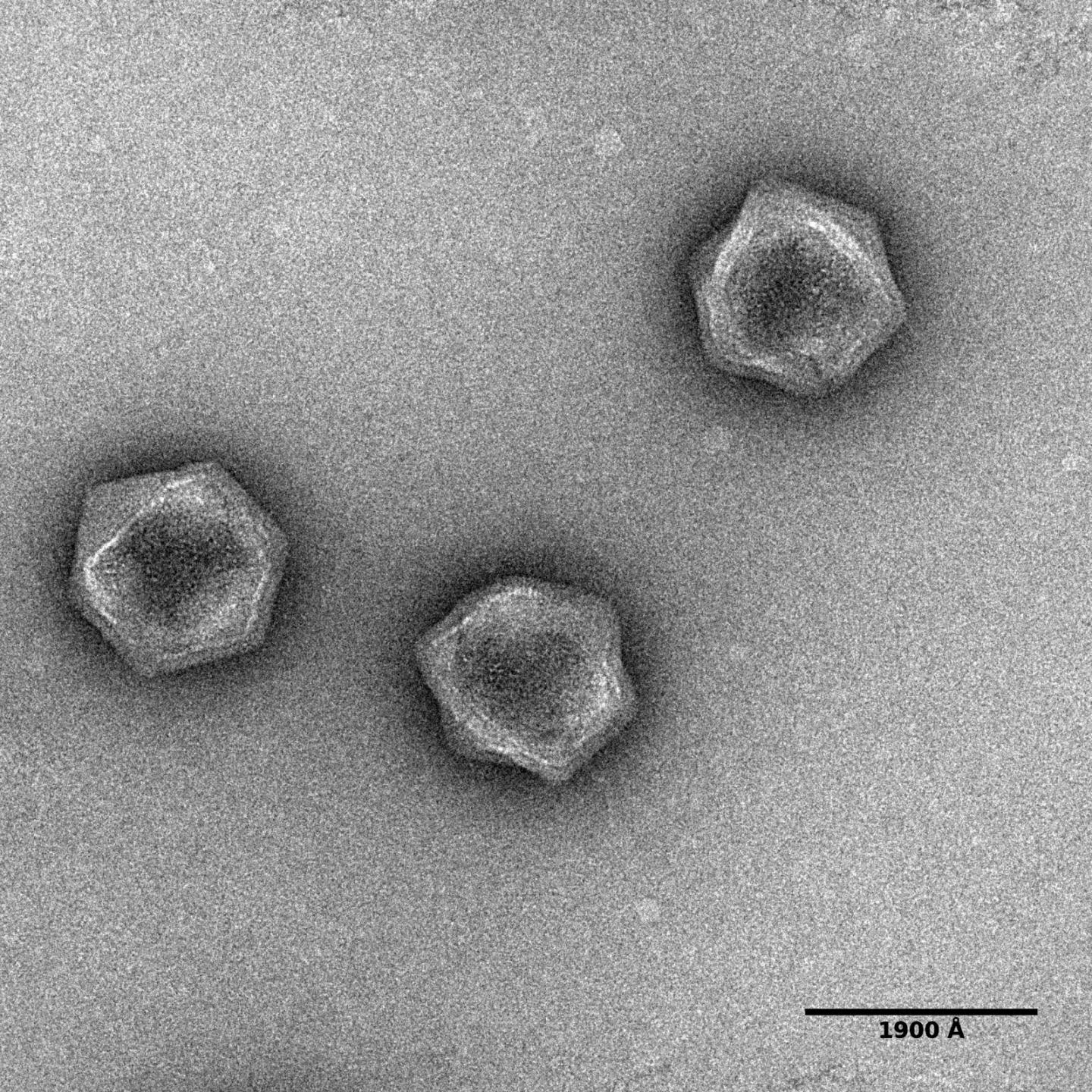Giant viruses are ten times the size of their more compact cousins and with hundreds or even thousands of genes, so unlike the rest of the family that until first cataloged in 1992, researchers had dismissed them as bacteria.
Surveys of viral diversity had previously excluded them because of the filters researchers use to separate viruses from bacteria and other larger organisms. It was soon realized that these oversized viruses were everywhere. In aquatic environments, they infect single-celled organisms like algae and protozoans. The metabolism of those comparatively complex organisms -- both nutrients consumed and waste produced -- influences the health of the oceans and lakes they live in, and ultimately the planet's carbon cycle.

'Brown tide virus' is a member of a class called the giant viruses. Credit: Dr. Chuan Xiao and Yuejiao Xian, the University of Texas at El Paso.
The clouds of green blooming across the surface of lakes and oceans as algae populations explode may be under the influence of these giant viruses whose genes can reconfigure their hosts' metabolism. And now it has been learned they have substantial collection of genes for metabolic cycles, a defining characteristic of cellular life.
Metabolism is a hallmark of cellular life
Metabolism, the collection of processes cells use to extract energy from nutrients, is a hallmark of cellular life, absent from viruses almost by definition. Nevertheless, these giant viruses seemed to have genes linked to several key metabolic pathways in living cells.
Using known giant-virus genes as markers and patterns in data created by others, the authors of a recent paper pieced together genomes for 501 giant viruses, primarily from marine and freshwater environments. Those genomes contained the standard features you'd expect, genes that direct the construction of the virus' protective shell, and that allow it to infect and kill its host, but also metabolic genes.
These metabolic genes included many functions that had never been seen in viruses. Other examples had been isolated viral genes that were virtually identical to their cellular counterparts, suggesting they had been acquired from the host by chance during an infection and pasted into the virus' genome relatively recently: vestigial artifacts of invasions past rather than functional tools. They comprise large portions of familiar metabolic pathways but had their own unique signature.
Not just junk
Virus-specific metabolic genes that survived millions of years of evolution may mean they aren't just genetic flotsam, but working components the virus deploys as it commandeers its host. In this case, the researchers say, the implication is that the virus is altering the cell's metabolism.irus-specific metabolic gene.
If these genes aren't just genetic flotsam, but working components the virus deploys as it commandeers its hos, the implication is that the virus is altering the cell's metabolism.





Comments